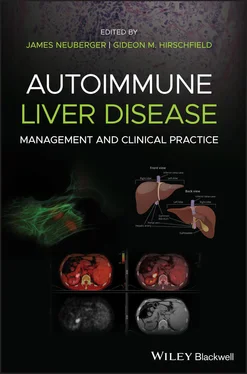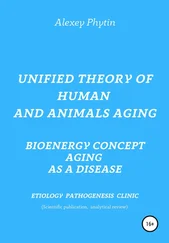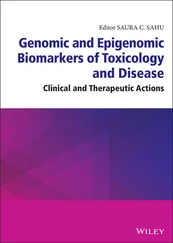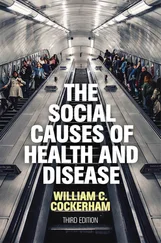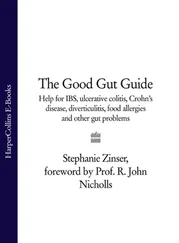IL‐19, IL‐20 and IL‐24 signal through the IL‐20RA/RB receptor complex [26]. Theses cytokines are expressed by both immune and epithelial cells and result in bilateral stimulation. These cytokines have a dual potential to immunoregulate innate and adaptive immune responses or to promote immunopathogenesis. These cytokines are most often pathogenic in autoimmune diseases, perpetuating chronic tissue inflammation.
Tertiary Lymphoid Structures and Germinal Centers
Tertiary lymphoid structures (TLSs) frequently develop in autoimmune diseases that contain T‐cell and B‐cell zones capable of producing adaptive cellular and humoral immune responses [27]. TLSs portend poor prognosis due to increased autoactivation of T‐ and B‐cell clones. Excessive production of autoantibodies against initiating autoantigens and those involved with epitope spreading augment antibody‐mediated cytotoxicity during the evolution of autoimmune diseases ( Figure 2.2). In addition, APC phagocytosis and processing of immune complexes composed of autoantigens and autoantibodies dramatically increase the quantity of autoantigen‐specific CD8 CTLs. Tfh cells and their signature cytokine IL‐21 drive B‐cell production of high‐affinity autoantibodies, differentiation of memory B cells, and APC functions of activated B cells within the expanded number of germinal centers in TLSs.
Epithelial Cell‐induced Transformation of iTreg to Th17 Cells
As discussed earlier, cytokines produced by MAIT cells can stimulate epithelial cells, including cholangiocytes, to secrete IL‐6, IL‐1β, IL‐23 and TGF‐β [7]. This combination of cytokines can transform iTregs into activated Th17 cells that promote a proinflammatory Th17‐mediated inflammation ( Figure 2.2).
Prevention of Autoimmunity and Therapeutic Control of Autoimmune Diseases
Overview
Our current understanding of the mechanisms involved in the generation and perpetuation of autoimmunity provide conceptual as well as realistic targets for interventions to prevent and treat autoimmune diseases [1]. Clearly, genetic and epigenetic SNPs and environmental exposures cannot be eliminated as risk factors. However, it may become possible to identify children at risk of autoimmunity and develop strategies to reduce their risk of autoimmune diseases. The development of new immunosuppressive medications, inhibition of cytokine production and function, and epigenetic inhibitors increase the probability of controlling a variety of autoimmune diseases in the near future.
Strategies to Prevent Autoimmunity
Vitamin D 3
Vitamin D deficiency is epidemiologically associated with risk of autoimmunity [19]. Achieving and maintaining high normal serum levels of vitamin D 3is a realistic and achievable goal, which could reduce the incidence and severity of autoimmune diseases.
Gut Microbiota Manipulation in Pregnancy and Infancy
It remains unclear if changes in the fecal microbiota associated with specific autoimmune diseases represent causes or effects [20]. Were causal relationships identified for either initiation or perpetuation of autoimmunity, several strategies theoretically could decrease the risk of autoimmunity, especially if used during pregnancy and infancy. These include probiotics to shape the evolution of the gut microbiota and sustain the mucosal barrier, fecal microbiota transplantation to create a preventive gut microbiome, and either deliberate infection with non‐pathogenic helminths or ingestion of specific parasite peptides to promote a systemic immunosuppressive Th2 environment [28].
Ingestion of antigens leads to absorption and interaction with the reticuloendothelial system of the liver. Repeated ingestion can result in oral tolerance, defined as the inability to respond to the ingested antigen when given parenterally [29]. Low doses of antigen induce iTregs, while higher doses create anergic tolerance. Studies involving the induction of oral tolerance to glutamic acid decarboxylase, the instigating autoantigen in T1DM, are ongoing. The applicability of oral tolerance depends on identification of disease‐specific initiating autoantigens; thus, it would be currently relevant in AILDs only for PBC and type 2 AIH.
Strategies to Treat Established Autoimmune Diseases
At the time of diagnosis, the initiating events of most autoimmune diseases likely occurred months to years earlier and mechanisms of perpetuation are well established. This poses challenges for clinical management and focuses attention on therapeutic strategies to control inflammation, modify symptoms and signs, and retard progression. Progress in understanding the pathogenesis of autoimmune diseases provides rationales for additional conventional and novel therapies ( Table 2.3). Two therapeutic approaches warrant additional comment.
Inducible T Regulatory T Cells
Studies of two strategies to produce iTregs specific for autoantigens are in progress ( Table 2.3) [1]. The first strategy is to increase the proliferation of existing iTreg populations by infusion of low doses of IL‐2, which is being studied in hematopoietic stem cell transplantation, graft‐versus‐host disease, T1DM, HCV‐associated vasculitis, and SLE. The second strategy involves generating antigen‐specific iTregs from peripheral blood mononuclear cells ex vivo for infusion. iTregs specific for CYP2D6 autoantigens in type 2 AIH have been produced, but not yet infused.
Epigenetic Enhancer Regulation
SNPs within enhancers, especially SEs, play dominant roles in autoimmune pathogenesis (see section Epigenetics) [16]. The theoretical fear that targeting epigenetic regulatory proteins might cause severe toxicity has not been observed with first‐generation inhibitors. Among SE proteins regulating genes associated with activation, stress and differentiation, the bromodomain and extra‐terminal (BET) family has emerged as a prime target for inhibition. BET inhibition decreased macrophage expression of inflammatory genes induced by lipopolysaccharide by preferentially inhibiting de novo expression of SE genes. BET inhibitors also blocked de novo SE gene expression in endothelial cells, markedly reduced CD4 Th cells differentiation to polarized subsets, and prevented effector cytokine production by already polarized Th cells. BET inhibitors also impacted B cells by inhibiting proliferation and ability to switch the isotype of their antibodies. More importantly, BET inhibitors have reduced inflammation and protected from disease in animal models of T1DM, MS, RA, and psoriasis. These data indicate that BET‐specific, and more generally SE‐related, mechanisms are promising therapeutic targets.
Table 2.3 Current and future therapeutic approaches to control autoimmune diseases.
|
Approaches |
Goal |
Status |
| Increase regulatory control of autoimmune responses |
Infuse low‐dose IL‐2 |
Expand existing autoantigen‐specific iTregs in vivo |
POC established. Clinical trials ongoing |
| Infuse iTregs generated ex vivo to control Th cell and cytokine responses |
Ex vivo generation of disease and autoantigen‐specific iTregs |
POC of iTreg generation established. No infusion trials to date. Viability, function and distribution after infusion unknown |
| Bromodomain and extra‐terminal (BET) family of proteins |
Inhibit disease‐specific epigenetic enhancers, super enhancers and eRNA production |
POC established. Clinical trials ongoing |
| Mesenchymal stem cells |
Inhibit innate immune cells, effector T cells. Induction of iTregs. Reduction of proinflammatory TNF‐α |
POC established. Clinical trials ongoing |
| Decrease numbers and/or functions of autoimmune effector cells and pathogenic autoantibodies |
Immunosuppressive drugs: CNI, mTOR, antiproliferative agents |
Reduce functional mass of activated T cells using immunosuppressive drugs |
SOC in multiple autoimmune diseases. Active research to refine target specificity and reduce toxicities. Combinations of drugs working at different sites of action using subtoxic doses preferred |
| Anti‐CD20 |
B‐cell depletion |
SOC and off‐label uses |
| Anti‐BAFF |
Initial B‐cell depletion followed by mobilization of memory B cells. Concurrent inhibition of BAFF signaling in T cells |
SOC in SLE. Broad future potential, especially in combination regimens |
| Anti‐BAFF, followed by anti‐CD20 |
Depletion of memory B cells mobilized by anti‐BAFF |
Sequential use to eliminate mobilized memory B cells to increase efficacy |
| Anti‐CD40 |
Block CD40–CD40L (CD154) costimulation of T cells and B cells |
POC. Clinical trial initiated in transplantation |
| Block IgG recycling and increase IgG clearance |
First in class antibody fragment to block FcRn (efgartigimod) |
POC to reduce pathogenic autoantibodies and formation of immunoglobulin–autoantigen complexes |
| Prevent egress of activated T cells from lymph nodes |
Block sphingosine‐1‐phosphate receptors |
SOC in MS, new agents in development |
| MDSCs |
Inhibit activation and proliferation of autoreactive T cells |
POC in preclinical models. Plans for clinical trials in RA |
| Decrease proinflammatory cytokines |
Anti‐TNF‐α or TNF‐α receptor |
Decrease TNF‐α mediated tissue injury and proinflammatory signaling |
SOC in multiple autoimmune diseases |
| Anti‐IL‐6 or anti‐IL‐6R |
Decrease pathological consequences of proinflammatory IL‐6 signaling in innate and adaptive immune response |
SOC in RA, clinical trials ongoing |
| Anti‐IL‐12 |
Decrease pathological consequences of proinflammatory IL‐12 signaling in innate and adaptive immune response |
Monoclonal antibody against p40 subunit. SOC in psoriasis and Crohn's disease. Also blocks IL‐23 signaling |
| Anti‐IL‐23 |
Decrease pathological consequences of proinflammatory IL‐23 |
Monoclonal antibody against p40 subunit. SOC in psoriasis and Crohn's disease. Blocks IL‐23 stimulation of Th17 cells |
| Anti‐IL‐17 |
Decrease pathological consequences of Th17 production of IL‐17 |
SOC for psoriasis and psoriatic arthritis. Clinical trials designed |
| Anti‐IL‐21 |
Decrease multiple pathological consequences of IL‐21 in innate and adaptive immune responses |
Clinical trials in RA, T1DM, Crohn's disease |
| Inhibition of proinflammatory cytokine signaling |
IL‐2 |
Decrease proliferation of activated CD4 and CD8 T cells |
SOC CNI and mTOR inhibitors. POC JAK3 inhibition |
| IL‐6 |
Decrease proinflammatory IL‐6R‐mediated signaling |
POC and SOC indications for JAK1/2 inhibition |
| IL‐12/IL‐23 |
Decrease proinflammatory IL‐12 and IL‐23 signaling that polarize to a Th1 response, increase secretion of IFN‐γ and TNF‐α, increase cytotoxicity of NK cells and CD8 CTLs and drive differentiation of pathogenic Th17 cells |
POC and SOC indications for JAK2 inhibition |
| IFN‐α/IFN‐β |
Decrease gene expression induced by type 1 IFNs |
POC and SOC indications for JAK1 inhibition |
| IFN‐γ |
Decrease proinflammatory actions of IFN‐γ produced by NK, NKT, CD4 and CD8 T cells |
POC and SOC indications for JAK1/JAK2 inhibition |
| Immunosuppressant cytokines |
rHuIL‐10 |
Antagonize Th1‐mediated pathology |
SOC to prevent pancreatitis post‐ERCP. Trial in ulcerative colitis terminated for concern over Guillain–Barré syndrome |
| Inhibition of transendothelial migration of effector cells |
Anti‐chemokine receptors or integrins |
Prevent injury by blocking egress of effector cells from blood into target tissues |
Block of α4β7 integrin ineffective in PSC. Potential for studies of other FDA‐approved chemokine/integrin inhibitors |
| Physiologic immunoregulation |
PIF |
Administration to recreate immunosuppressive and immunomodulatory environment of the fetus and mother during pregnancy |
Phase 1b trial of synthetic PIF in AIH completed |
AIH, autoimmune hepatitis; BAFF, B‐cell‐activating factor; CNI, calcineurin inhibitor; ERCP, endoscopic retrograde cholangiopancreatography; IL, interleukin; iTregs, inducible T regulatory cells; JAK, Janus kinase; MDSCs, myeloid‐derived suppressor cells; MS, multiple sclerosis; mTOR, mechanistic target of rapamycin; PIF, pre‐implantation factor; POC, proof of concept; PSC, primary sclerosing cholangitis; RA, rheumatoid arthritis; rHuIL‐10, recombinant human IL‐10; SLE, systemic lupus erythematosus; SOC, standard of care; T1DM, type 1 diabetes mellitus; Th, T helper cell; TNF, tumor necrosis factor.
Читать дальше
